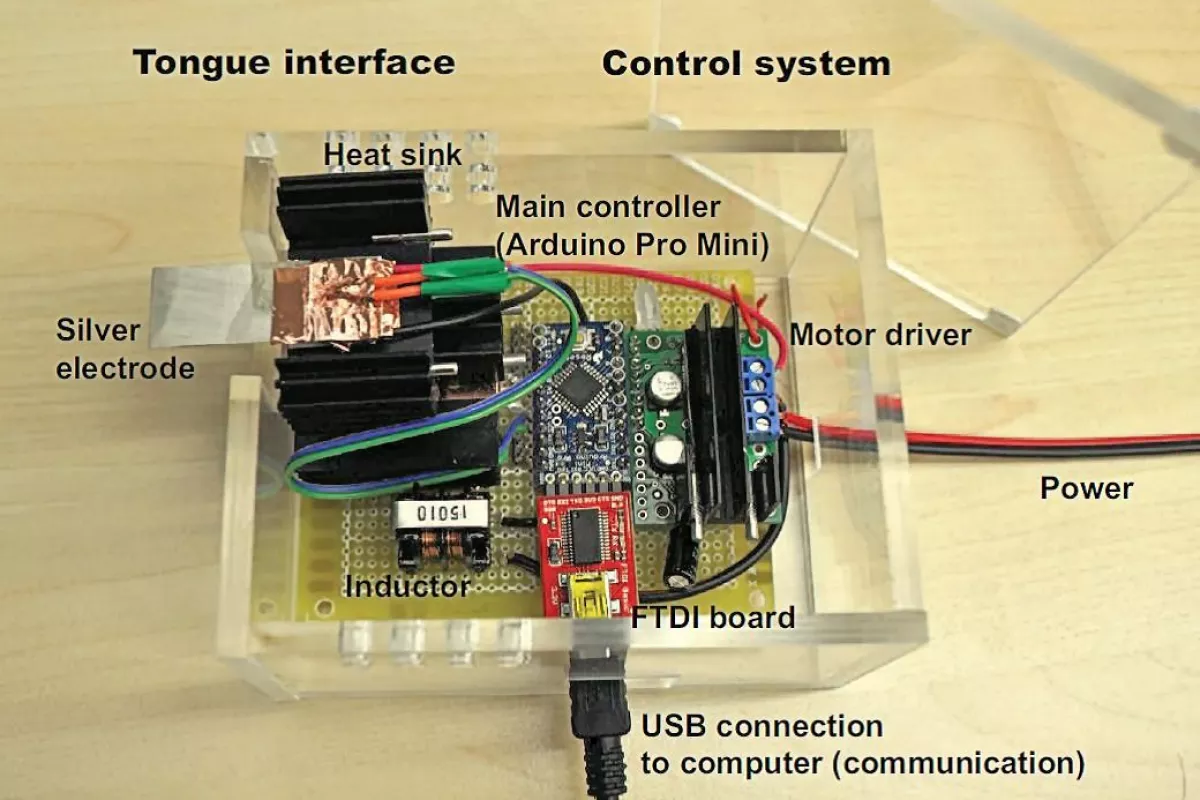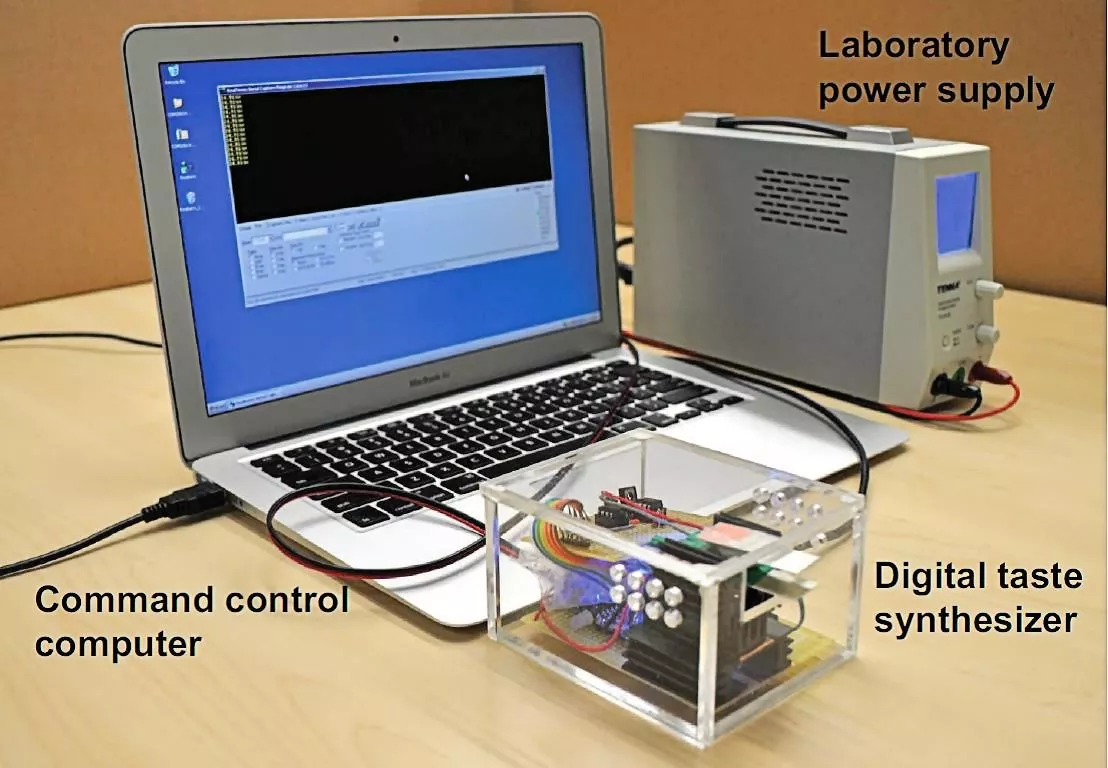Today is Thanksgiving Day in the United States, a holiday in which we celebrate the blessings granted by Life, the Universe, and Everything. A central part of US Thanksgiving traditions involves a massive feast, often featuring turkey or ham and a selection of delicious side dishes. It may soon be possible to virtually experience such a repast as enjoyed by a character in a movie or a video game, aided by a new method for digitally actuating the sense of taste through electrical and thermal stimulation of the tongue.
The sense of taste is simple but subtle. While flavors are a complex mixture of taste, smell, texture, temperature, and chemesthesis, there are very few individual tastes that can be distinguished. These include sour, salty, bitter, sweet, umami, and perhaps fatty, astringent, kokumi (mouthfeel), and pungent.
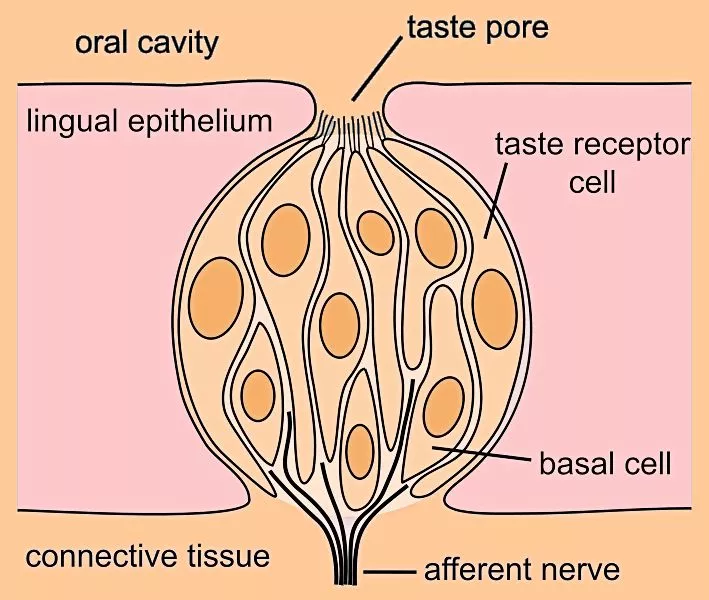
Salty and sour tastes are detected by their influence on ion channel-controlled cells triggered by sodium and hydrogen ions (pH changes), respectively, while bitter, sweet, and umani sensations follow the triggering of G protein-coupled receptor cells in the taste buds.
Tastes can be simulated by mixing together an appropriate cocktail of chemicals, but this is not a very practical method for use as a human-computer interface. The long-term goal is to interact directly with the brain areas which are stimulated by the sense of taste, which offers the possibility of sharing the experience of taste and flavor.
At present, this approach is out of reach (although just barely), so Dr. Nimesha Ranasinghe of the Mixed Reality Lab (MXR) at the National University of Singapore decided to investigate another non-chemical approach to inducing a person to experience an intended taste.
Anyone who played with batteries as a child would have noticed that a sour sensation was the result of licking the two terminals of a 9V battery. Dr. Ranasinghe decided to investigate electrical stimulation of the taste buds on the tongue, but combined this with thermal stimulation, which is also known to alter the perception of taste.
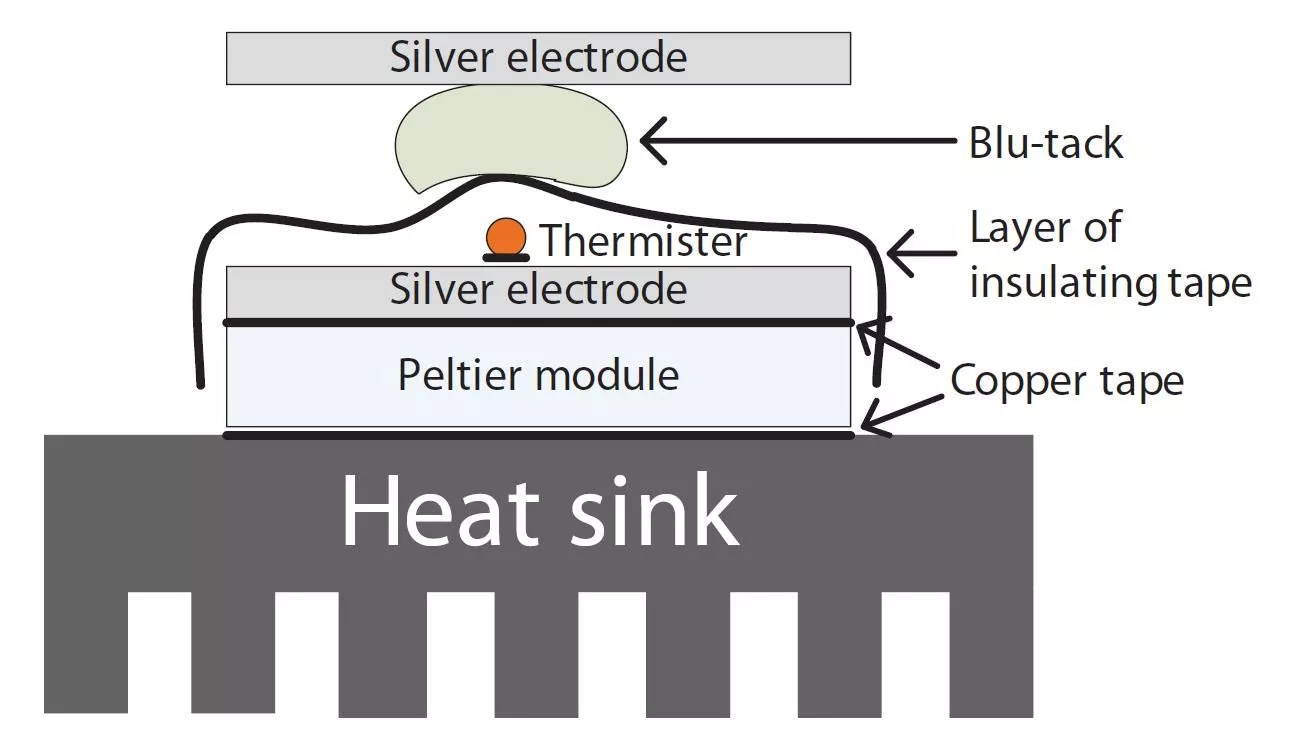
He developed a tongue interface that can apply both kinds of stimulus, electrical by applying a voltage between two silver electrodes, and thermal by connecting one of the silver electrodes to a Peltier thermoelectric element that can quickly heat or cool the tongue. The tongue is then placed between the silver electrodes, and the resulting sensations are compared to taste references and described by the subject.
The control electronics are computer interfaced, can supply a current of 20 to 200 microamps (uA) at frequencies from 50 to 1,200 Hz, and can change the temperature of the electrodes from 20 to 40° C (68 to 104° F) or the reverse in about 30 seconds.
A constant-current source is used for the electrical stimulation as the resistance of a tongue can vary a good deal from subject to subject, as well as with the area of the tongue being stimulated. The waveform output by the constant-current source is a polarized square wave (voltage between 0 and a positive value), but the form rounds off considerably when pumping current through a tongue.
Here is a quick summary of what combinations of stimulation produce which sensations of taste:
- Sour: 60-180 uA while temperature increased from 20 to 30° C;
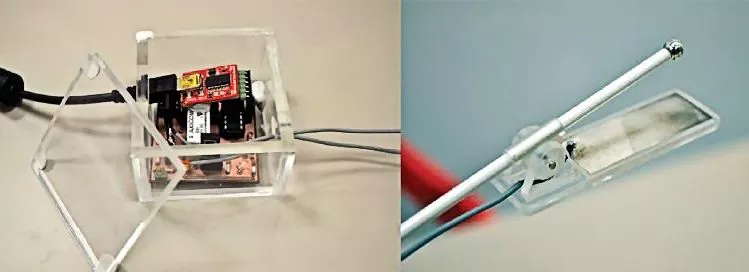
A "Digital Lollypop" that provides only electrical stimulation was also developed to see if induced taste sensations could be calibrated for groups of subjects. A strong trend was indeed found for intensities of sour taste, as shown below:
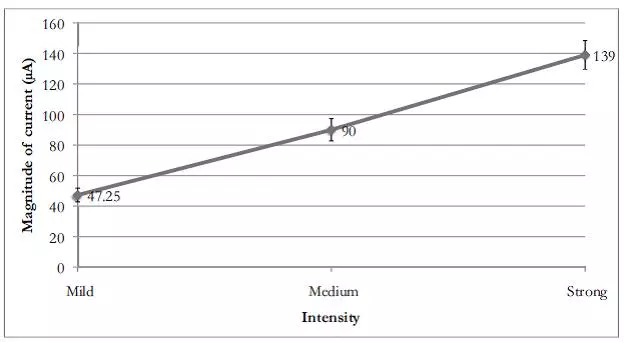
While the sensation of taste is only a small portion of the sensory inputs that the brain combines to produce a true gustatory experience, it is an essential component. It is unclear if direct electrical and thermal stimulation as a digital taste interface will lead to many applications, but the longer-term goal of direct brain stimulus is more likely, in the long run, to succeed in allowing two (or two billion) people to share the experience of a wonderful meal, as in the video below.
Sources: National University of Singapore, Tampere University of Technology (PDF)
